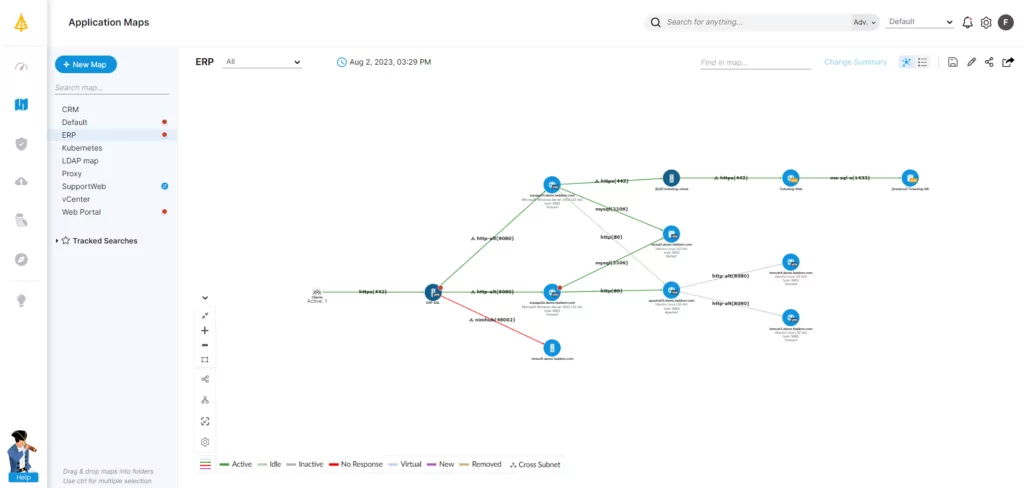Data centers are the foundation of applications, workloads, and data in the digital era. As data centers simultaneously consolidate and grow, their place in the market continues to evolve. This duality of contraction and expansion has many drivers, including application/data growth, analytics, IoT, and AI, the move from owned assets to hybrid cloud/multicloud, and sustainability requirements. Sustainability is likely to continue to be a key focus for the data center industry as net-zero carbon mandates proliferate across the public sector, according to a 2022 study from JLL.
Hyperscale data centers and other providers continue to grow and build new facilities. It is estimated that overall data center growth will jump to 7.4 GW online in 2023, compared to 4.9 GW last year, according to Cushman & Wakefield’s global market comparison study. But cost constraints, balanced with need for higher capacity and speed, are increasingly forcing enterprise data centers to seek consolidation with hybrid cloud use, as opposed to pursuing expansion.
Table of Contents
ToggleOther factors playing a part in data center consolidation include the ubiquity of software virtualization support, hardware cost reductions, and the need for fewer, more efficient servers. Simultaneously, space, power, and cooling constraints are fueling both data center growth and consolidation in 2023.
Data center consolidation is primarily concerned with efficiency, which can then fuel more efficient growth to accommodate factors like edge computing and data sovereignty. As such, the seemingly conflicting trends of consolidation/growth are not in fact contradictory, but rather complementary. To understand how the influx of market and technology opportunities and challenges determine today’s trends in enterprise data center evolution, an understanding of data center consolidation is required.
What Is Data Center Consolidation?
The goals of data center consolidation are to meet increasing usage, resiliency, and cost efficiency demands and respond to market and business changes. The process of data center consolidation is often defined by efficiency improvements, which are achieved through adjustments to combinations of compute, capacity, cooling, and power. Often, this plays out as the physical consolidation of one or more data centers, which run(s) more effectively on fewer resources.
Reasons for Data Center Consolidation
The reasons for data center consolidation vary, but the process is often part of a broader data center transformation strategy. Applications and workloads that require compute, OS, storage, and networking inform every consolidation and transformation strategy. Virtualization, hybrid cloud, and multicloud uptake, along with migration between data centers, all drive consolidation and its improved efficiency and agility for enterprises.
Server, power, and cooling upgrades may spur data center consolidation projects with an eye to lowering costs, increasing efficiency, and meeting growing regulatory mandates. This keeps pace with projects like the Climate Neutral Data Center Pact, adopted by over forty European data center operators and trade organizations.
M&A processes sometimes require two companies to consolidate multiple data centers. Individual enterprises and organizations are also engaging in consolidation to lower CapEx and total cost of ownership (TCO) through colocation and hyperscale cloud provider use.
Hybrid and multicloud migration journeys taken in pursuit of cost and operational efficiency can be integral to data center consolidation. These efficiencies cannot be attained without comprehensive application discovery and dependency mapping, which enable decisions around placement of these applications and workloads. This is true regardless of whether the migration destination is elsewhere within the same data center, in another data center, or part of hybrid cloud and multicloud migration strategies. The one constant is that all data center consolidation projects should have defined and beneficial business outcomes.
Benefits of Consolidation
Evidently, there are countless reasons that drive data center consolidation, all of which translate to potential benefits for multiple stakeholders. This applies to private enterprise data centers, data center/colocation providers, and hyperscalers like AWS, Azure, and GCP. Enterprise data centers are more likely to look at consolidation alone, while data center providers employ strategic growth and consolidation across their regional or global footprints. The specific benefits afforded by consolidation deserve a closer look.
Cost Reduction
Consolidation can decrease both CapEx and OpEx by consolidating multiple functions into fewer devices. This increases efficiency while reducing power and cooling costs. A reduction in the number of devices can also free up available floor space for future expansion needs, while supporting efficient maintenance and security through monitoring/management automation and a broad range of updates.
Management of Growth and Agility
Consolidation enables organizations to manage growth effectively by accommodating their growing storage capacity, performance, and operational requirements. This leads to enhanced business agility which fuels business growth, and the associated potential for increased innovation in service provision.
Productivity and Sustainability Improvement
The business efficiency improvements resulting from data center consolidation can pave the way for agility through cloud and edge expansion. These potentially consolidation-driven architectures can accommodate AI, IoT, and data analytics, which organizations can tie to third-party data center locations. By moving to more efficient servers, power, and cooling—coupled with virtualization and cloud migration—organizations can increase productivity and sustainability.
Increased Security and Risk Reduction
Consolidation can assist with risk reduction by providing safeguards against downtime from hardware failures, power failures, and site-wide outages, while also supporting more efficient business continuity and disaster recovery (BCDR) strategies. BCDR encompasses data, server, and network system backups. As such, a more efficient and resilient BCDR plan is supported by virtualization, cloud migration, and data center consolidation via more efficient server use.
Developing a Data Center Consolidation Strategy
Before organizations can reap the aforementioned benefits, they need a comprehensive data center consolidation strategy. Data center consolidations are complex and challenging endeavors. They present an ongoing battle between maintaining uptime while moving the process forward via the migration of hardware, applications, workloads, and storage to different servers, data centers, or the cloud. Each organization’s consolidation project is defined by its needs, resources, and goals, but will always start with an evaluation of all physical assets.
Evaluation
For processes including guaranteeing a seamless facility, and equipment migration to the migration of applications and workloads, IT teams must develop an accurate map of the current environment(s). This includes comprehensive IT asset and application discovery and dependency mapping. The resulting map will support planning for the present and future with regard to design, development, migration, and human resource needs.
Geographic Location, Facilities, and Energy Use
The organization must perform a comprehensive evaluation of the physical data center in order to evaluate factors such as square footage, usable space, age, construction, lease/ownership, along with the projected remaining useful lifecycle. The data center’s geographic location determines physical factors such as climate, water access, proximity to services, and land and business regulations, all of which inform the data center’s cost and efficiency. Evaluation of the data center facility’s components and energy use needs must also be performed, and should include everything, from server racks and cabling to power supplies and cooling units.
Application, Workload, and Dependency Evaluation via Mapping
Hardware and software are the next areas for assessment in the evaluation process, which includes appraisal of the number, capacity, and utilization of servers, and the total percentage of virtualization. Storage systems and their used capacity should also be analyzed, along with networking equipment such as switches, firewalls, routers, and hubs.
Applications are the foundation of this evaluation step, including the assessment of their interlocking dependencies across the application stack, storage, OS, compute, and networking. Creating a detailed application discovery and dependency map is evidently essential to performing this stage successfully, and sets the stage for development of system/facility design and project team configuration, and the alignment of these aspects with defined business and consolidation outcomes.
Project Team and Budget
The project team requires a diverse set of internal (and, in addition, possibly external) specialists, including movers, IT design/configuration specialists, and project managers to oversee benchmarks, costs, and outcomes. The PM, supported by business and/or departmental leaders, will determine the ideal timeframe for the project that ensures disruption is minimized while desirable outcomes are reached.
Consolidation projects have complex cost and budget frameworks because they impact almost every aspect of a business’ current and future technology, including facilities, equipment, IT assets, personnel, and utility costs (including any licensing, cloud, and migration costs.) Organizations root their data center consolidation projects in data center migration, which require backup plans, installation, and IT equipment testing. An expert security team supports final design migration and testing, using monitoring to ensure that all applications, workloads, and data are secure through pre-and post-consolidation and migration phases.
Design
The final consolidation design is based on architecting the internal systems and hardware, along with destination environment design and migration. Naturally, the final design varies by project, but many IT teams take advantage of reference data center designs to save time and money during the initial design stages, ensure that they start with general best practices, and avoid a ground-up design. Many system and cloud providers have reference designs available for use.
Post-Consolidation Testing
The final phase of the migration process involves comprehensive testing of the physical layout, and of every component, system, application, and workload in the new environment. Organizations can avert many potential consolidation risks at this phase via full and thorough testing, but the entire consolidation and migration process has inherent potential risks that must be determined and evaluated with a sound avoidance plan.
Consolidation Challenges and Risks
All data center consolidation projects carry risks, including employee disruption, data loss, security risks, and operational downtime. The project team must prepare a strategy that identifies and eliminates these risks to the greatest possible extent, while also preparing for the unexpected.
The first step is defining what can go wrong in each category. The categories to consider are numerous, ranging from physical facilities and systems to hardware, from applications workloads to the migration process. The potential business impact of each risk factor must be determined, and then coupled with a mitigation plan. Some mitigation will be proactive, and some reactive.
A comprehensive application discovery and dependency mapping tool can provide mitigation blueprints at all stages, from pre-consolidation through to migration. Having a comprehensive BCDR plan in place can further lower risks.
Data Center Consolidation Checklist
While every data center consolidation project has particular characteristics and brings an associated unique set of challenges, many core elements remain consistent from one project to the next. The following checklist can be used to guide project development, and organizations can update and customize it throughout the process by adding detail as additional tasks come to light.
- Inventory equipment and facilities, including conducting discovery of all applications, dependencies, and applications.
- Assemble a project team with stakeholder communications.
- Create a consolidation framework that identifies and minimizes all risks and maximizes consolidation outcome realization.
- Develop a detailed TCO analysis reflecting pre- and post-consolidation business goals.
- Implement a facility and hardware decommissioning and recycling process.
- Create a detailed communications plan for the project team, stakeholders, and company personnel across the life of the project.
- Develop application relevance configurations and dependencies to maximize agility for future business outcomes.
- Develop a comprehensive risk framework based on each aspect and stage of the project, along with proactive and reactive mitigation contingencies.
- Ensure integration of a BCDR plan along with pre and post facility, system, and application workload and dependency testing.
- Define allowable downtime and likely dates for upgrades and changes.
- Ensure the project team is large enough to accomplish the consolidation and migration project.
How Application Discovery and Mapping Drives Data Center Consolidation

Data center consolidation offers businesses a range of valuable benefits. These benefits share the potential for increased market competitiveness in an age of expanding data and cloud usage, cost containment, sustainability concerns, and the leveraging of new and beneficial technologies.
At the heart of every data center are the valuable data and applications that enable business stability, growth, and competitiveness. Consolidation must ultimately maximize the ability to leverage data, applications, and workloads for greater efficiency and improved business outcomes. Success of this kind requires an understanding of the enterprise’s physical, virtual, and application assets via assessment, discovery, and mapping.
Faddom’s agentless, hybrid application dependency mapping tool does exactly that in as little as 60 minutes. Start a free trial today!









